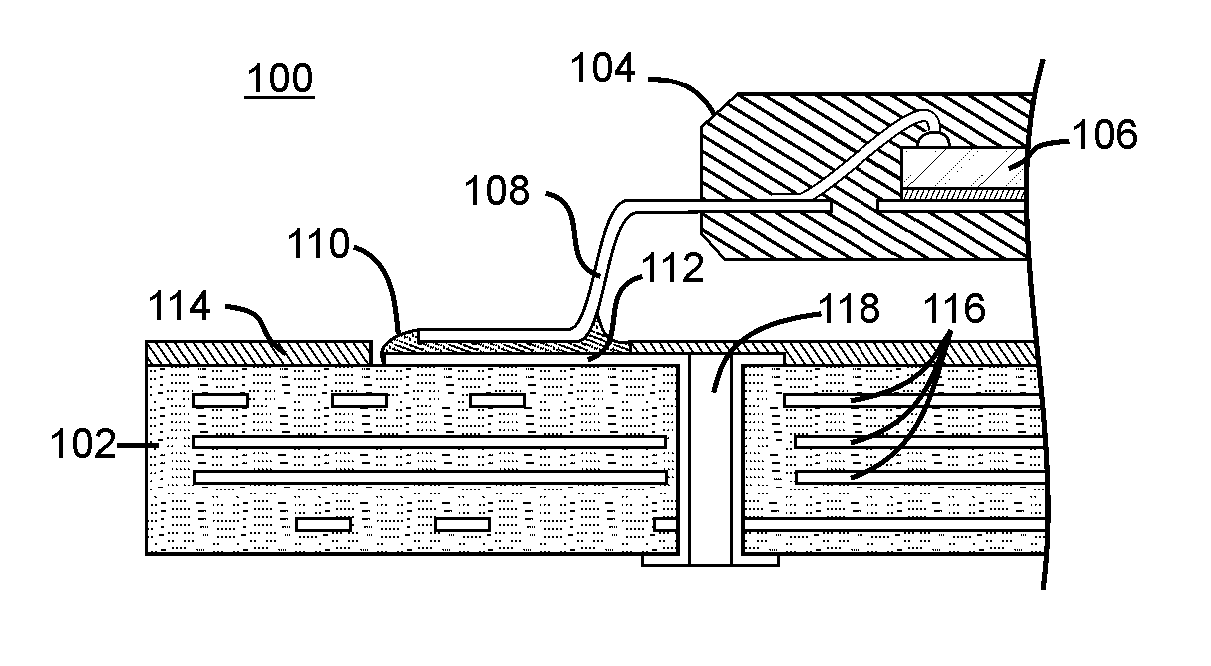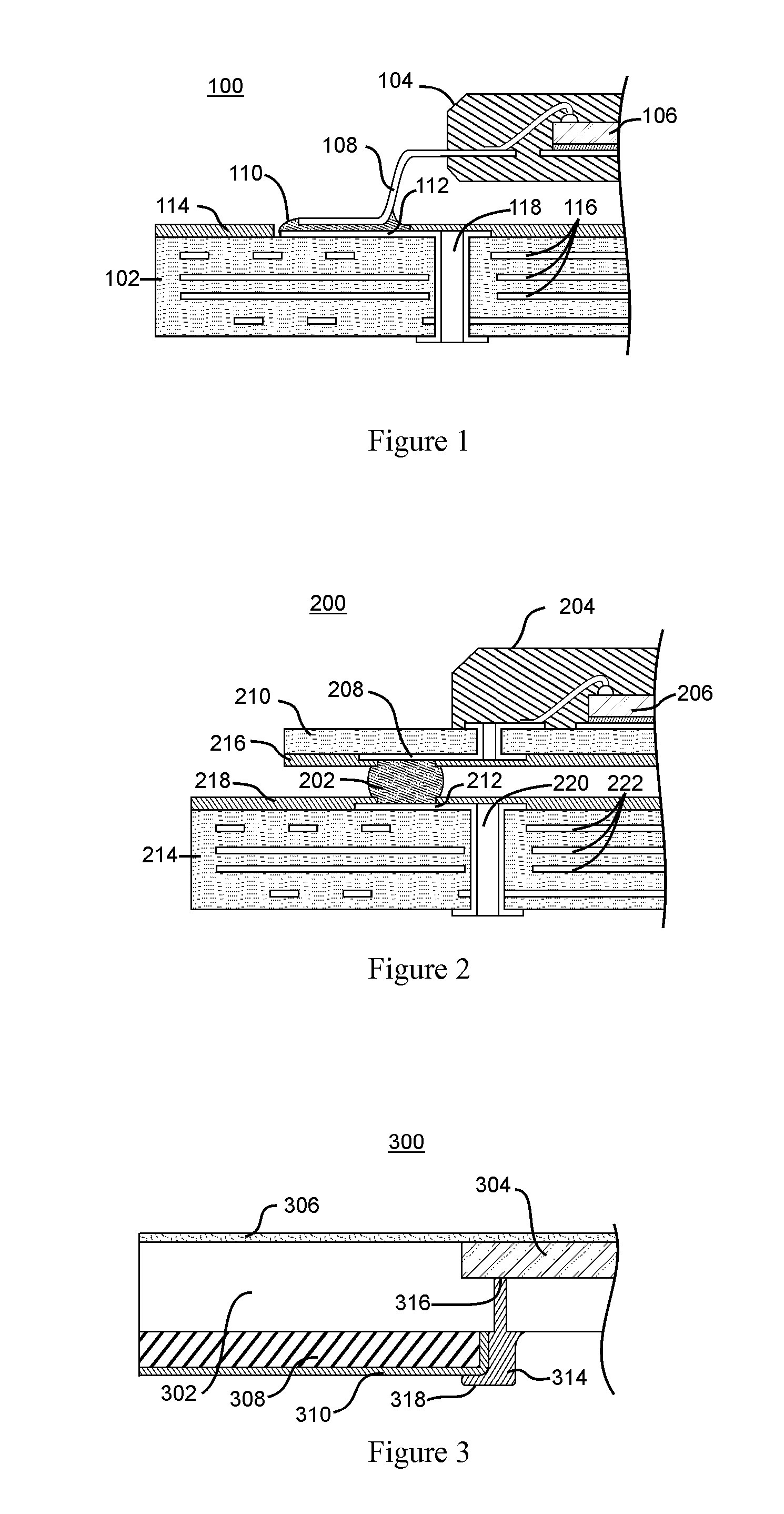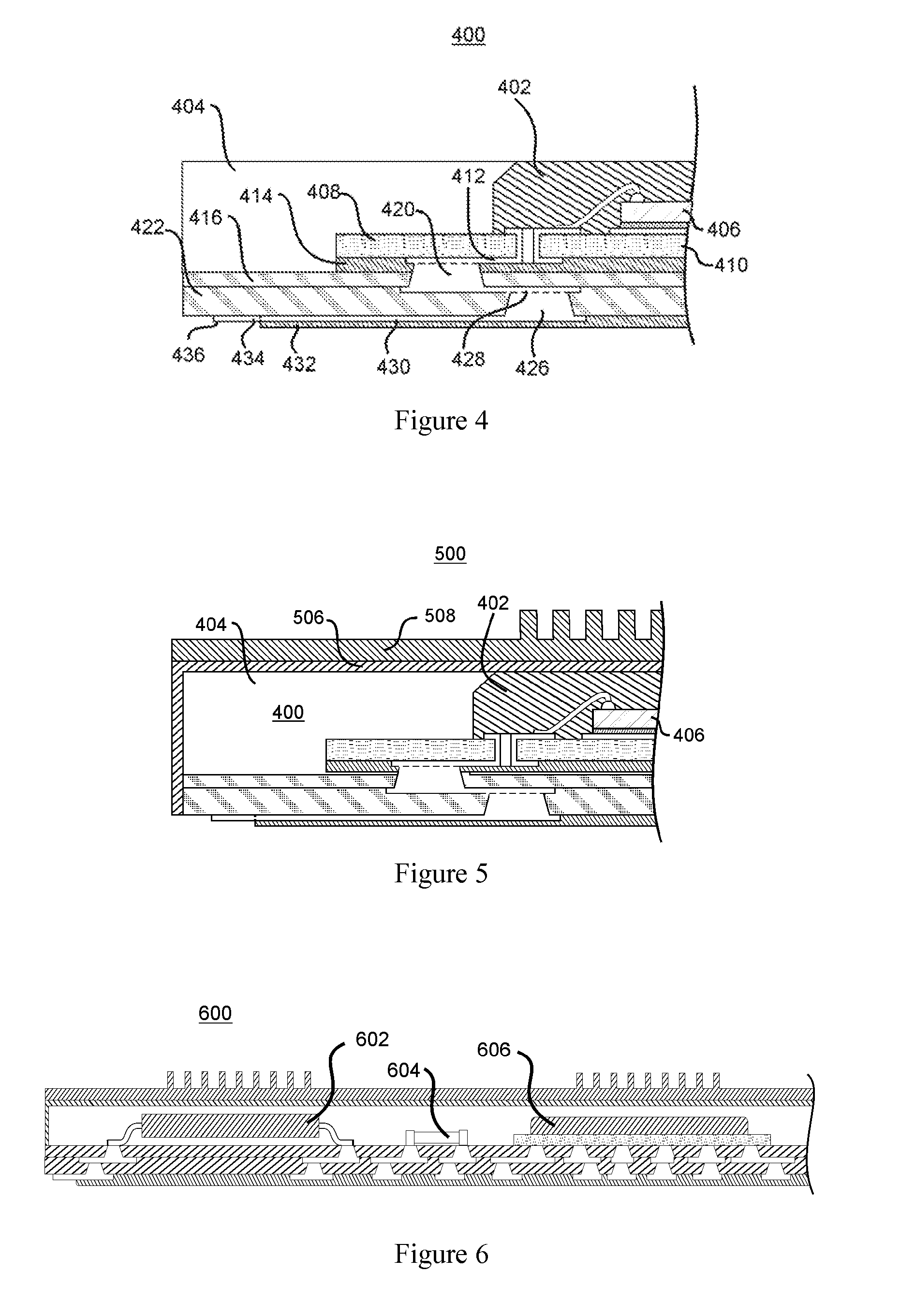Flexible Circuit Assemblies without Solder and Methods for their Manufacture
a flexible circuit and assembly technology, applied in the field of electronic assembly, can solve the problems of high toxic substances, dangerous fumes produced by soldering operations, and potential hazards for workers, and achieve the effects of reducing costs and complexity, shortening manufacturing cycle time, and reducing reliability problems of pcb
- Summary
- Abstract
- Description
- Claims
- Application Information
AI Technical Summary
Benefits of technology
Problems solved by technology
Method used
Image
Examples
Embodiment Construction
[0082]In the following description and in the accompanying drawings, specific terminology and drawing symbols are set forth to provide a thorough understanding of the present invention. In some instances, the terminology and symbols may imply specific details that are not required to practice the invention. For example, the interconnection between conductor elements of components (i.e., component I / O leads including electro-optical ports) may be shown or described as having multi-conductors interconnecting to a single lead or a single conductor signal line connected to multiple component contacts within or between devices. Thus each of the multi-conductor interconnections may alternatively be a single-conductor signaling, control, power or ground line and vice versa. Circuit paths shown or described as being single-ended may also be differential, and vice-versa. The interconnected assembly may be comprised of standard interconnections; microstrip or stripline interconnections and al...
PUM
| Property | Measurement | Unit |
|---|---|---|
| flexible | aaaaa | aaaaa |
| electrically insulating | aaaaa | aaaaa |
| electrically conductive | aaaaa | aaaaa |
Abstract
Description
Claims
Application Information
 Login to View More
Login to View More - R&D
- Intellectual Property
- Life Sciences
- Materials
- Tech Scout
- Unparalleled Data Quality
- Higher Quality Content
- 60% Fewer Hallucinations
Browse by: Latest US Patents, China's latest patents, Technical Efficacy Thesaurus, Application Domain, Technology Topic, Popular Technical Reports.
© 2025 PatSnap. All rights reserved.Legal|Privacy policy|Modern Slavery Act Transparency Statement|Sitemap|About US| Contact US: help@patsnap.com



